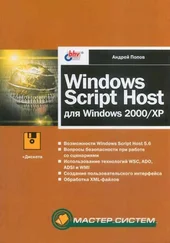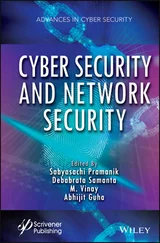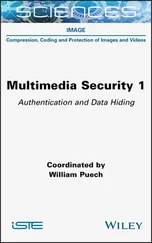NOTE Windows Server 2012 R2 features enhancements to provide improved support for SATA drives. These enhancements reduce metadata inconsistencies and enable drives to cache data more efficiently. Improved disk caching helps to protect cached data in the event of an unexpected power loss.
When setting up a new server, you should give considerable thought to the drive configuration. Start by choosing drives or storage systems that provide the appropriate level of performance. There really is a substantial difference in speed and performance among various drive specifications.
You should consider not only the capacity of the drive but also the following:
■ Rotational speedA measurement of how fast the disk spins
■ Average seek timeA measurement of how long it takes to seek between disk tracks during sequential I/O operations
Generally speaking, when comparing drives that conform to the same specification, such as Ultra640 SCSI or SATA III, the higher the rotational speed (measured in thousands of rotations per minute) and the lower the average seek time (measured in milliseconds, or msecs), the better. As an example, a drive with a rotational speed of 15,000 RPM gives you 45–50 percent more I/O per second than the average 10,000 RPM drive, all other things being equal. A drive with a seek time of 3.5 msecs gives you a 25–30 percent response time improvement over a drive with a seek time of 4.7 msecs.
Other factors to consider include the following:
■ Maximum sustained data transfer rateA measurement of how much data the drive can continuously transfer
■ Mean time to failure (MTTF)A measurement of how many hours of operation you can expect to get from the drive before it fails
■ Nonoperational temperaturesMeasurements of the temperatures at which the drive fails
Most drives of comparable quality have similar transfer rates and MTTF. For example, if you compare enterprise SAS drives with 15,000 RPM rotational speed from different vendors, you will probably find similar transfer rates and MTTF. Transfer rates can be expressed in megabytes per second (MBps) or gigabits per second (Gbps). A rate of 1.5 Gbps is equivalent to a data rate of 187.5 MBps, and 3.1 Gbps is equivalent to 375 MBps. Sometimes you’ll get a maximum external transfer rate (per the specification to which the drive complies) and an average sustained transfer rate. The average sustained transfer rate is the most important factor.
NOTE Don’t confuse MBps and Mbps. MBps is megabytes per second. Mbps is megabits per second. Because there are 8 bits in a byte, a 100 MBps transfer rate is equivalent to an 800 Mbps transfer rate.
Temperature is another important factor to consider when you’re selecting a drive, but it’s a factor few administrators take into account. Typically, the faster a drive rotates, the hotter it runs. This is not always the case, but it is certainly something you should consider when making your choice. For example, 15K drives tend to run hot, and you must be sure to carefully regulate temperature. Typical 15K drives can become nonoperational at temperatures of 70 degrees Centigrade or higher (as would most other drives).
Windows Server 2012 R2 adds support for disk drives with hardware encryption (referred to as encrypted hard drives). Encrypted hard drives have built-in processors that shift the encryption-decryption activities from the operating system to hardware, freeing up operating system resources. Windows Server 2012 R2 will use hardware encryption with BitLocker when available. Other security features available in Windows Server 2012 R2 include Secured Boot and Network Unlock. Secured Boot provides boot integrity by validating Boot Configuration Data (BCD) settings according to the Trusted Platform Module (TPM) validation profile settings. Network Unlock can be used to automatically unlock the operating system drive on domainjoined computers. For more information on TPM, BitLocker, Secured Boot, Network Unlock, and encrypted hard drives, see “Using TPM and BitLocker Drive Encryption” in Chapter 2 of Windows 8.1 Administration Pocket Consultant: Storage, Networking, Security (Microsoft Press, 2013).
Preparing a physical drive for use
After you install a drive, you need to configure it for use. You configure the drive by partitioning it and creating file systems in the partitions as needed. A partition is a section of a physical drive that functions as if it were a separate unit. After you create a partition, you can create a file system in the partition.
The MBR and GPT partition styles
Two partition styles are used for disks: master boot record (MBR) and GUID partition table (GPT). The MBR contains a partition table that describes where the partitions are located on the disk. With this partition style, the first sector on a hard drive contains the master boot record and a binary code file called the master boot code that’s used to boot the system. This sector is unpartitioned and hidden from view to protect the system.
With the MBR partitioning style, disks traditionally support volumes of up to 4 terabytes (TB) and use one of two types of partitions: primary or extended. Each MBR drive can have up to four primary partitions or three primary partitions and one extended partition. Primary partitions are drive sections you can access directly for file storage. You make a primary partition accessible to users by creating a file system on it. Although you can access primary partitions directly, you can’t access extended partitions directly. Instead, you can configure extended partitions with one or more logical drives that are used to store files. Being able to divide extended partitions into logical drives allows you to divide a physical drive into more than four sections.
GPT was originally developed for high-performance, Itanium-based computers. The key difference between the GPT partition style and the MBR partition style has to do with how partition data is stored. With GPT, critical partition data is stored in the individual partitions, and redundant primary and backup partition tables are used for improved structural integrity. Additionally, GPT disks support volumes of up to 18 exabytes (1 exabyte equals 1,024 x 1,024 terabytes) and as many as 128 partitions. Although the GPT and MBR partitioning styles have underlying differences, most disk-related tasks are performed in the same way.
Legacy and protective MBRs
Most computers ship with Unified Extensible Firmware Interface (UEFI). Although UEFI is replacing BIOS and EFI as the top-level firmware interface, UEFI doesn’t replace all the functionality in either BIOS or EFI and typically is wrapped around BIOS or EFI. With respect to UEFI, GPT is the preferred partitioning scheme and a protective MBR may be located on any disk that uses the GPT disk layout. A legacy MBR and a protective MBR differ in many important ways.
A legacy MBR is located at the first logical block on a disk that is not using the GPT disk layout. The first 512 bytes on an MBR disk have the following layout:
■The MBR begins with a 424-byte boot code, which is used to select an MBR partition record and load the first logical block of that partition. The boot code on the MBR is not executed by UEFI.
■The boot code is followed by a 4-byte unique MBR disk signature, which can be used by the operating system to identify the disk and distinguish the disk from other disks on the system. The unique signature is written by the operating system and not used by UEFI.
■A 2-byte separator follows the disk signature. At byte offset 446, there is an array of four MBR partition records, with each record being 16 bytes in length. Block 510 contains 0x55 and block 511 contains 0xAA. Block 512 is reserved.
Читать дальше






